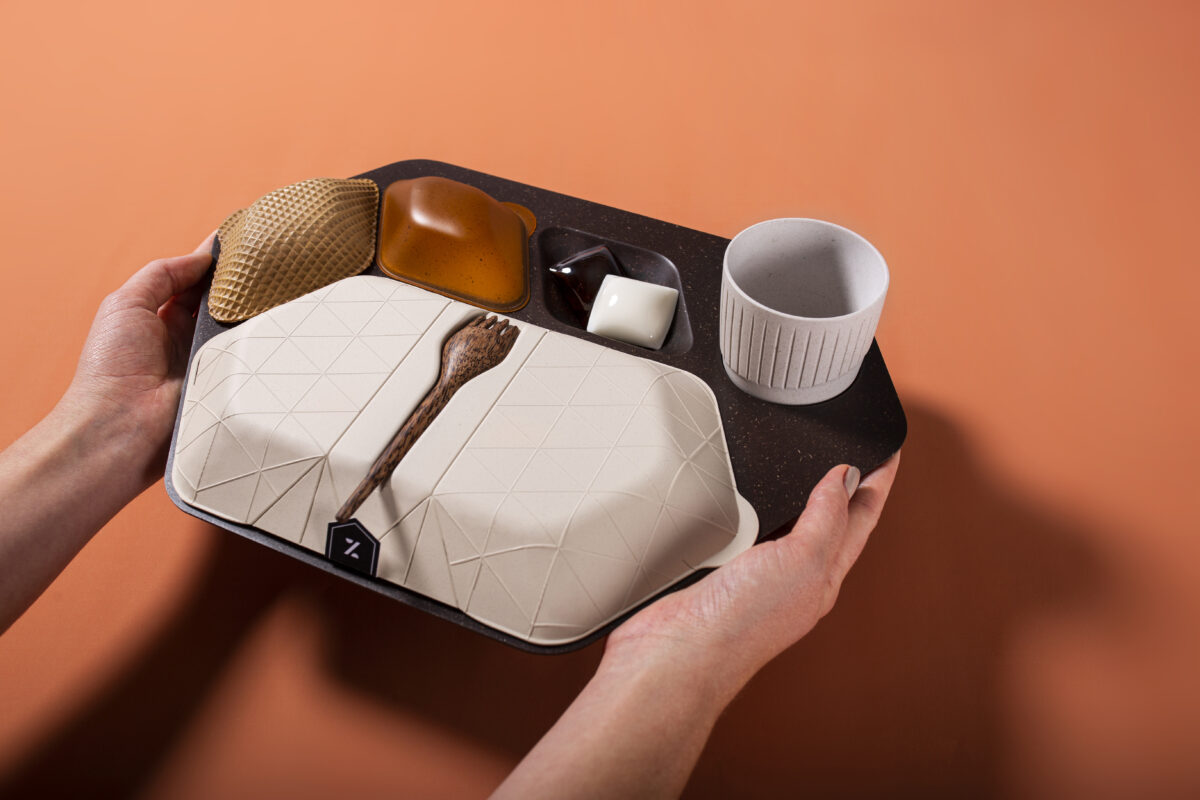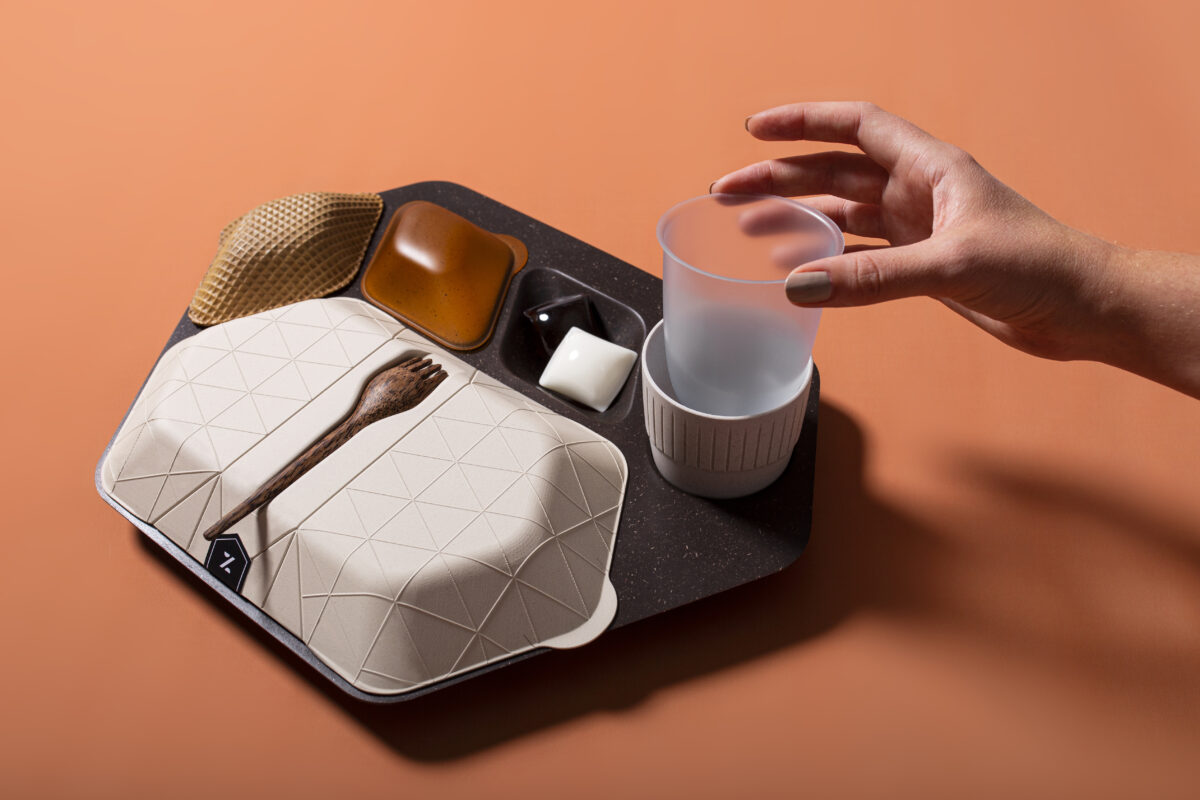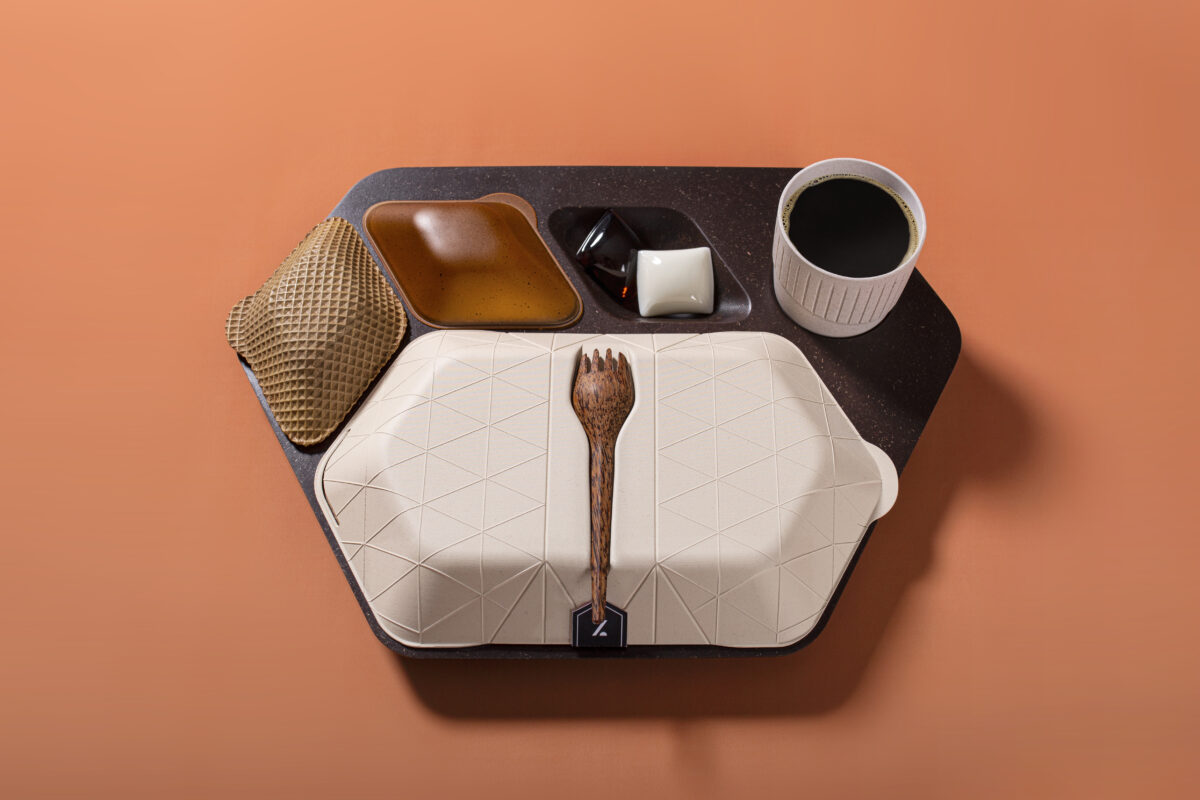Have you ever wondered what happens to the container your plane food comes in? Where that uneaten bread roll and over-cooked chicken breast go? Are the plastic forks separated from the disposable cups when throwing out the rubbish?
Transport design studio PriestmanGoode’s exhibition, Get Onboard: Reduce. Reuse. Rethink, explores the ways design and material innovation can address the vast waste issue during airplane travel. It is estimated each year a total of 5.7 million tonnes of cabin waste is generated from onboard flights. The exhibition raises questions around ways individual behaviors, and the infrastructure and products that make up airline travel, can be altered in order to make airline traveling more sustainably conscious and clean.

With travel and flying set to return to higher demands post global pandemic, perhaps it’s time to take advantage and offer passengers a more sustainable service? PriestmanGoode wants to raise awareness around how much waste is created during airline travel and explore alternatives that can minimize waste and address the supply of products and services in order to create a more sustainable travel industry.
PriestmanGoode have devised a series of solutions to rethink the travel journey and make it more sustainable. These include:
Rethinking the Meal Tray
This sustainable meal tray is made from 100 percent biodegradable, edible or compostable materials. Its skeletal frame was designed to minimize waste, with its food packaging able to easily fold into a compostable pack that turns into fuel after it is used and thrown away.
The meal tray was made with circular design principles in mind. The geographic shape of the tray gives a fresh twist to the standard in-flight meal tray. The warm brown and green colors look like the materials they are made off, giving the overall feel of the tray a refreshed and comfortable feel, which may make the flying experience for some more enjoyable and fresh.

Rethinking the Water Bottle and Refill
A passenger can use up to 10 plastic cups (or bottles) during a long-haul flight. Per flight, that can amass to as much as 3,370 plastic bottles per flight. PriestmanGoode designed a water bottle made from biodegradable materials. The bottles are made of cork and bio-plastic, making it reusable and compostable after the individual gets off the airplane.
Its earthy and textured tones, available in a warm lavender or creamy white color, give the bottles an inviting air about them, something that lacks in the typically sterile environment of short or long-haul flights.
Rethinking Onboard Service
The different aspects of onboard service was explored by PriestmanGoode, these include sleep products, travel toiletries, entertainment products and onboard shopping. The information of each aspects environmental impact was conveyed to the individual in a way that is easy to grasp, as a means of encouraging behavior change.

Rethinking Cabin Material
Material innovation is a continuously evolving field in which new materials are made from recycled objects. Nylon made from recycled ocean plastic can be used as airplane carpets. The recycling process is then an indefinite cycle, as plastic is a key contributor to global waste, on and off the airline strip.
Design is an important tool, according to the Associate Strategy Director at PriestmanGoode, in which creative thinking and problem solving can be used to look and change how we encounter change in consumer behavior. An important question to ask and answer is how we, as individuals, can minimize resources and waste, and how businesses can do the same on a larger scale.
Get Onboard: Reduce. Reuse. Rethink ran from 12 September 2019 to 9 2020 February at the Design Museum in London.















